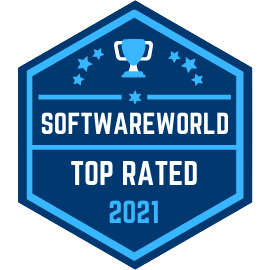If you build it, will they come? So many of our clients seem to think that the job is over once the app is built. And while that would be amazing in theory, it’s usually not the case. Before you get the completion, it is really important for you to think about what is the path to adoption for your custom software? For apps that you are providing to your customers, what is your rollout plan? Have you considered the marketing and sales processes that will ultimately be a key factor in the success of the product? If you are building an internal tool, how will you roll out the new application to your employees in a way that is positively received? Thinking about the path to adoption will most likely influence some of the decisions you make and who to involve as you create your application. Here are some questions to ask yourself and your team as well as things to think about as you begin to plan for your custom app and getting your audience to adopt it.
Who are the stakeholders in this project and what is their role?
To create your custom app, you need to create a team that will yield the most successful software. We believe a successful software product requires many roles. Included in that group of people should be key project stakeholders. For example, who will make the final decision on when to go live? Who controls the purse strings? Who has influence over if the application is a success or not? You want to make sure that whoever your stakeholders are, they are included in the custom software conversation as early as possible in the process. You don’t want to spend time and money building what you think is a great software product, then have conflicting opinions and resistance to rolling out a product that the team feels is ready.
Who will be the first users and/or customers?
Software is often built with the goal of serving many people. But who do you anticipate will be your first users or customers? Thinking about this is important for two main reasons:
It allows you to prioritize the features that will be most impactful for that group.
Your long term plans might involve a wide user base. For example, one of our projects here at Mutually Human is an app built for teachers. Long-term, our client would love to see teachers, principals, students, and parents all having access to different sections of the application. One approach would be to build some of those features for each type of user. However, when we determined the first set of users will be teachers, that allowed us to focus the priorities on features that will add value to their job first and foremost. In another phase, we could choose to expand on those features or focus on another persona and start to build features for them.
You can create pilot groups to test your app and collect feedback.
Whether your users will be external or internal, it is important to collect feedback from users as early and often as possible. One way to do that is to build a pilot group.
This can depend on if the app is going to be used for external or internal purposes as well.
Back to the example of the application built for teachers, the first release of this application was to a group of 20 teachers. We found many teachers who volunteered to be on the front lines of trying out the new product. They got free access to the app in return for providing feedback on their experience. We learned what worked well with the applications, and what changes we needed to make to improve the content and experience. After that group, the product was marketed for sale to all teachers in the target market.
For another project built for internal operations, the department had 40 employees that would use the application. A handful of people were selected to use the app for the first few weeks to ensure it worked as expected. Once we tested it out, made adjustments, it was rolled out to the whole department.
How are you planning to introduce your custom software?
It would be nice to think that your new app would get universal adoption once it hits the market on the basis of its value alone. But, unfortunately, that’s not the case. You’ll need to plan how you will let the first users/customers know about your project and what the plan is after that group.
If it is an external product, what is your marketing strategy? It’s important to work with your sales and marketing team to develop a launch plan. This will help ensure that your new app will be seen by a large portion of your target audience. These are the experts that can help give your product the best start in the marketplace to ensure its success.
Make sure that this conversation begins early. Your sales and marketing team should be involved in the conversation from the start as stakeholders and provide information based on market research, sales conversations, and more.
If it is internal, what is the rollout plan? Who are the people that need to be on board in order to get wide adoption? Will you work with HR? Department managers? Will you hold training for employees? Webinars or a series of in-person meetings?
Are there any key milestones you are trying to hit for your custom software?
When do you need to have a release of your application ready? Is there something happening in the market (conference, school year starting, etc.) that is a key milestone for your product? Knowing some of these key dates will inform what features you decide to build now, next, and in the future.
At Mutually Human, we have a lot of experience in launching apps with an amazing track record of launching on time and on budget. We’ve worked with many different kinds of companies and we’ve seen it all. We know that custom app building and launching can be tricky, and we want to help you out. Our KeyQ software planner is a checklist you can use to answer some key questions before jumping straight into building an application. You can download it for free here.









